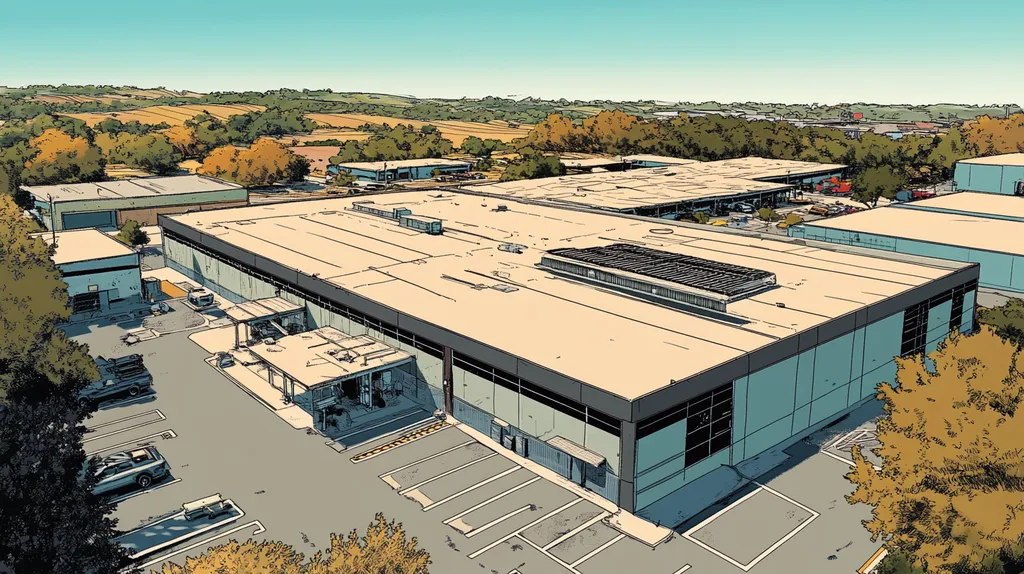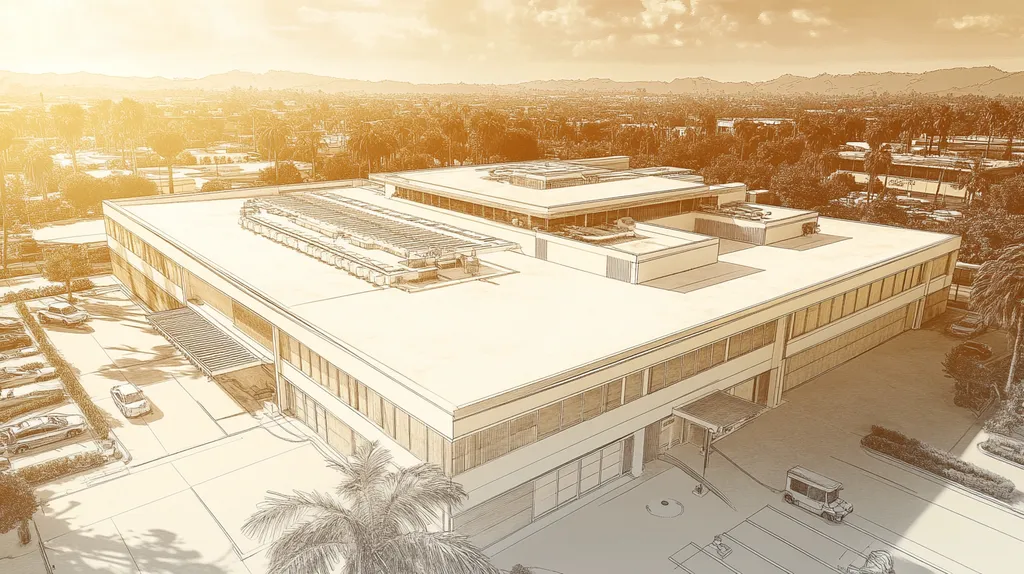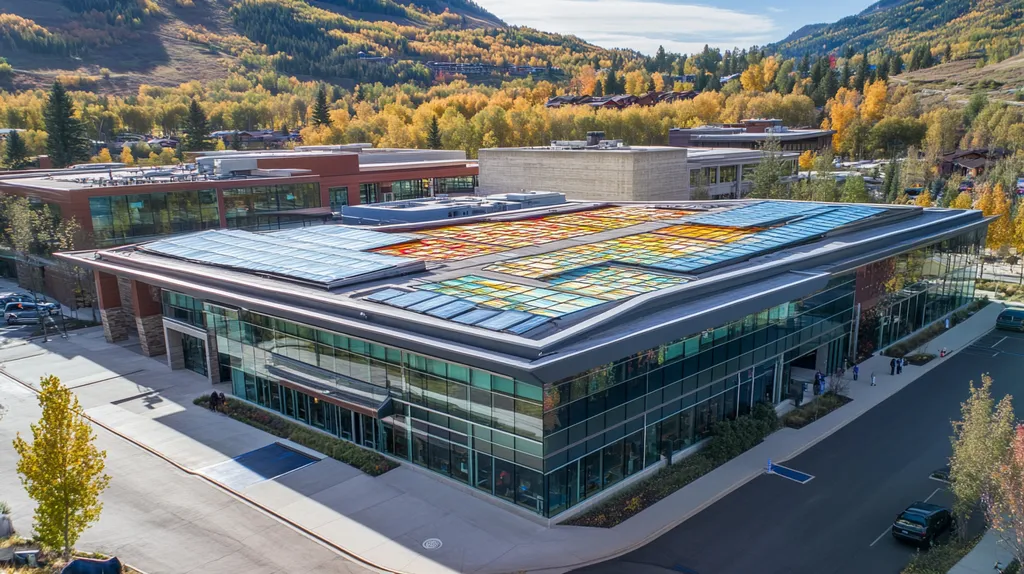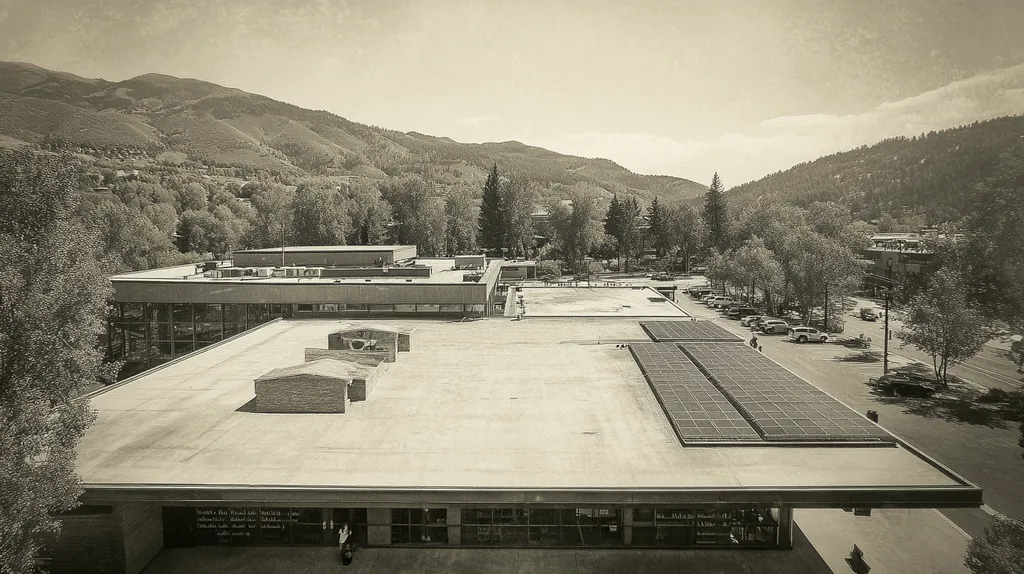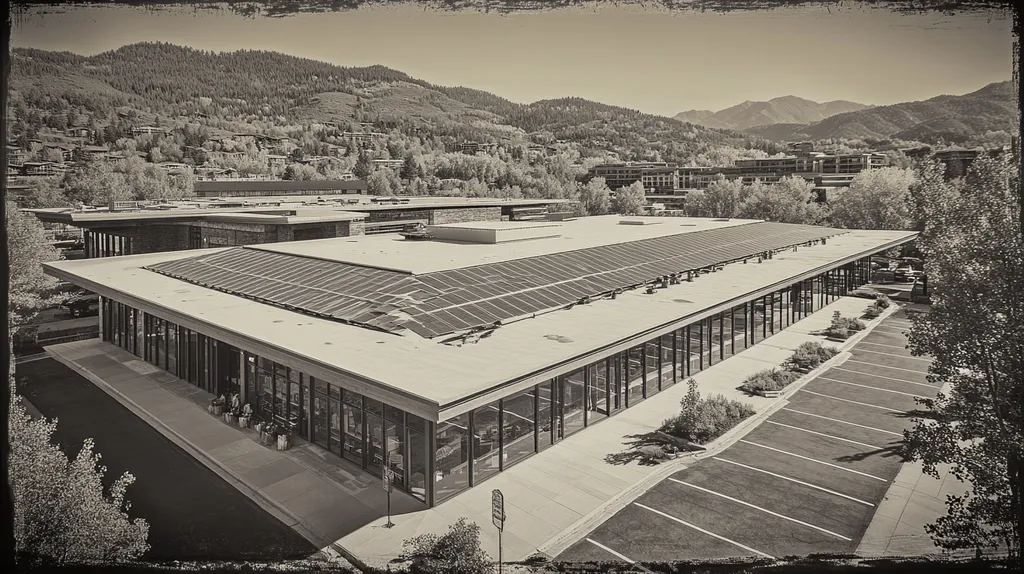Welcome to today’s Battle Royale featuring two roofing heavyweights: “Polyurethane Coatings” in the east corner versus “Silicone Coatings” in the west!
Tonight’s showdown pits these contenders against each other across six punishing rounds designed to test every aspect of their performance for ROI Calculation for Commercial Roofs.
At stake? Millions in potential costs, decades of building protection, and the critical performance demands of modern commercial and industrial facilities.
Our professional judging panel will evaluate each round on technical merit, real-world performance, and value delivery. After all six rounds, we’ll declare our ultimate champion.
Ladies and gentlemen, facility managers and building owners… it’s time to rumble!
ROUND 1: INITIAL COSTS & INSTALLATION
Every commercial roofing decision carries significant financial weight, with coating choices impacting both immediate budgets and long-term facility operations. Property managers must navigate a complex web of material costs, installation requirements, and project scheduling that can make or break their ROI.
Understanding these factors isn’t just about comparing price tags – it’s about protecting millions in assets while keeping operations running smoothly.
Material Expenses
The ROI calculation for roofing investments must consider both immediate and long-term material costs. While polyurethane coatings typically demand a higher upfront investment, their superior durability and resistance to physical damage often justify the initial expense.
Silicone coatings present a more budget-friendly initial price point but may require more frequent reapplication or maintenance over time. This difference in material costs significantly impacts the total investment over the coating’s lifetime.
When comparing pure material expenses and long-term value, polyurethane coatings demonstrate clear advantages despite their higher initial cost. (source: Sunbase Data Blog)
Installation Complexity
Installation complexity directly affects labor costs and project success rates. Polyurethane coatings require specialized application techniques, precise environmental conditions, and extensive surface preparation.
Silicone coatings offer simpler application processes with fewer environmental restrictions. Their forgiving nature allows for easier installation across various weather conditions and substrate types.
The straightforward application process of silicone coatings translates to lower labor costs and reduced risk of installation errors, giving them a clear advantage in this category.
Project Timeline
Project duration impacts both direct costs and business disruption. Polyurethane installations typically require longer cure times between coats and more extensive surface preparation, extending the overall project timeline.
Silicone coatings can often be applied in a single pass with shorter cure times. This efficiency minimizes facility disruption and allows for faster project completion.
The rapid installation capabilities of silicone coatings provide a significant advantage in maintaining business continuity and reducing overall project duration.
ROUND 1 WINNER: SILICONE COATINGS
ROUND 2: DURABILITY & LIFESPAN
In commercial roofing, durability determines whether your investment will last 5 years or 20 years. A coating’s ability to withstand environmental stressors, foot traffic, and equipment installations directly impacts maintenance costs and replacement frequency.
With commercial roof replacements often exceeding $250,000, selecting a coating system that maximizes lifespan becomes a critical financial decision. Understanding how different coatings perform over time can mean the difference between frequent repairs and decades of reliable protection.
Physical Durability
Polyurethane coatings excel in physical durability, offering superior resistance to impacts, abrasions, and punctures. Their molecular structure creates a tough, flexible membrane that maintains its protective properties even under heavy foot traffic.
These coatings demonstrate exceptional tensile strength and can stretch up to 300% without breaking. This flexibility allows them to handle building movement and thermal cycling without cracking or separating.
Silicone coatings provide good initial durability but can become brittle over time. Their softer surface is more susceptible to physical damage and tends to accumulate dirt, which can degrade performance.
In physical durability assessments, polyurethane coatings demonstrate clear advantages over silicone options.
Weather Resistance
Both coating types offer strong weather resistance, but with different performance characteristics. Polyurethane maintains its protective properties through extreme temperature variations and shows minimal degradation from UV exposure.
Silicone coatings excel specifically in moisture resistance and can handle ponding water without deteriorating. However, they may show accelerated aging when exposed to prolonged UV radiation.
While both materials provide adequate weather protection, polyurethane’s broader range of environmental resistance gives it a slight edge in this category.
Service Life Expectations
A well-maintained polyurethane coating system typically delivers 15-20 years of service life. The durable chemistry allows for multiple recoats, potentially extending the total lifespan to 30+ years.
Silicone coatings generally provide 10-15 years of protection before requiring significant maintenance or replacement. Their performance tends to decline more rapidly in the latter years of service.
When evaluating long-term ROI, polyurethane’s extended service life and recoating potential translate into lower lifecycle costs. The computation of investment returns must factor in these extended performance benefits to accurately assess total value.
The ROI calculation clearly favors polyurethane when considering service life expectations. (source: Sunbase Data Blog)
ROUND 2 WINNER: Polyurethane Coatings
ROUND 3: PERFORMANCE FACTORS
Commercial roofing performance can mean the difference between protecting millions in assets and facing catastrophic failure. With modern facilities facing increasingly extreme weather patterns and rising energy costs, choosing the right coating system has never been more critical for long-term building protection and operational efficiency.
Every year, inadequate roof performance costs U.S. businesses over $1 billion in damaged inventory, disrupted operations, and emergency repairs. Understanding how different coating options perform under real-world conditions is essential for making informed investment decisions.
Durability Against Weather Elements
Weather resistance directly impacts a coating’s ability to protect valuable assets and maintain its protective properties over time. From intense UV radiation to thermal shock and wind-driven rain, commercial roofs must withstand increasingly extreme conditions.
Polyurethane coatings demonstrate exceptional resistance to UV degradation and maintain their physical properties even after years of exposure. Their molecular structure allows them to expand and contract with temperature changes while maintaining waterproof integrity.
Silicone coatings excel at moisture resistance but can become chalky and lose thickness over time when exposed to UV radiation. While they handle ponding water well, their surface can deteriorate more quickly in areas with intense sun exposure.
For overall weather resistance, polyurethane coatings demonstrate a clear ADVANTAGE.
Energy Efficiency
The ROI calculation for coating systems must factor in their impact on building energy consumption. Modern coating technologies can significantly reduce cooling costs and improve building efficiency ratings.
Polyurethane coatings maintain their reflective properties longer than alternative systems, resulting in consistent energy savings throughout their service life. Their dense cross-linked structure also provides superior insulation value.
Silicone coatings offer excellent initial reflectivity but tend to accumulate dirt more readily, reducing their energy-saving benefits over time. Their thermal performance can degrade as the coating ages and loses thickness.
When considering long-term energy efficiency impact, polyurethane coatings show a clear ADVANTAGE.
Maintenance and Repair Needs
Maintenance requirements significantly impact the total cost of ownership for any roofing system. The ability to easily repair damage and maintain protective properties directly affects long-term ROI calculations.
Polyurethane coatings bond exceptionally well with repair materials, even years after initial installation. Their tough surface resists mechanical damage and typically requires only minimal periodic maintenance.
Silicone coatings can present challenges during repairs due to their poor adhesion to new materials. Their softer surface often requires more frequent touch-ups and may need complete recoating sooner.
In terms of maintenance and repair considerations, polyurethane coatings demonstrate another clear ADVANTAGE.
ROUND 3 WINNER: Polyurethane Coatings
ROUND 4: MAINTENANCE REQUIREMENTS
Every dollar spent on commercial roof maintenance can prevent $10 in emergency repairs. With average repair costs exceeding $15,000 per incident, choosing a coating system with optimal maintenance requirements directly impacts both short-term budgets and long-term facility operations.
Understanding the maintenance profiles of different coating systems isn’t just about scheduling inspections – it’s about protecting capital investments while minimizing operational disruptions.
Inspection Requirements
Regular inspections form the backbone of any successful roof maintenance program. Polyurethane coatings typically require quarterly professional inspections due to their susceptibility to mechanical damage and UV exposure.
These inspections must carefully evaluate surface integrity, seam conditions, and drainage patterns. Early detection of issues prevents minor damages from escalating into major repairs.
Silicone coatings generally need only bi-annual inspections, focusing primarily on debris removal and general cleanliness. Their superior weather resistance and self-cleaning properties reduce the frequency and complexity of inspection requirements.
For inspection requirements and associated costs, silicone coatings show a clear ADVANTAGE.
Cleaning and Preventive Care
Polyurethane coatings demand regular cleaning to maintain their reflective properties and prevent degradation. Their surface texture can trap dirt and debris, requiring specialized cleaning protocols to avoid damage.
The cleaning process must include gentle pressure washing and specific cleaning agents. Improper cleaning techniques can compromise the coating’s protective properties.
Silicone coatings feature naturally smooth surfaces that resist dirt accumulation and require minimal cleaning intervention. Their hydrophobic properties allow rain to naturally wash away most contaminants.
In terms of cleaning and preventive maintenance needs, silicone coatings demonstrate another clear ADVANTAGE.
Repair Protocols
Polyurethane coating repairs require extensive surface preparation and careful material matching. The repair area must be completely clean and dry before new material application.
The repair process often involves multiple steps and specific environmental conditions. This complexity increases both labor costs and repair timelines.
Silicone coatings offer simpler repair protocols with excellent adhesion to existing materials. Their moisture-curing properties allow for repairs even in less-than-ideal conditions.
For repair ease and associated costs, silicone coatings earn a third clear ADVANTAGE.
ROUND 4 WINNER: SILICONE COATINGS
ROUND 5: SUSTAINABILITY CREDENTIALS
Environmental responsibility has become a critical factor in commercial roofing decisions, with sustainable solutions directly impacting both operational costs and corporate environmental goals. Studies show that buildings account for nearly 40% of global energy consumption, making roofing choices crucial for meeting sustainability targets.
Modern facility managers must balance immediate performance needs with long-term environmental impact. The right coating choice can reduce energy consumption by up to 30% while minimizing waste and extending roof life cycles.
Environmental Impact
Manufacturing processes and material composition significantly influence a coating’s environmental footprint. Polyurethane coatings utilize advanced production methods that minimize waste and reduce harmful emissions during manufacturing.
The exceptional durability of polyurethane systems means fewer replacements over time, resulting in reduced landfill impact. Their resistance to degradation also prevents chemical leaching into the environment.
Silicone coatings offer good initial environmental performance but require more frequent replacement. Their production process involves more complex chemical reactions and higher energy consumption.
For overall environmental impact, polyurethane coatings demonstrate a clear ADVANTAGE.
Energy Efficiency
Coating selection directly affects building energy consumption through thermal performance and solar reflectivity. Polyurethane coatings maintain their reflective properties longer, delivering consistent energy savings throughout their service life.
These coatings create an effective thermal barrier that reduces heat transfer into the building. Their dense molecular structure provides superior insulation compared to other coating options.
Silicone coatings start with excellent reflectivity but tend to accumulate dirt more readily. This surface contamination reduces their energy-saving effectiveness over time, requiring more frequent cleaning to maintain performance.
In terms of sustained energy efficiency, polyurethane coatings show a clear ADVANTAGE.
Longevity and Material Lifecycle
The total environmental impact of a coating system depends heavily on its service life and maintenance requirements. Polyurethane coatings typically last 20-25 years with proper maintenance, minimizing replacement frequency and associated waste.
These systems can often be recoated rather than completely replaced, further extending their useful life. The ability to refresh the surface without full removal reduces landfill impact and conserves resources.
Silicone coatings generally provide 10-15 years of service before requiring replacement. Their shorter lifecycle means more frequent disposal and replacement cycles, increasing the overall environmental footprint.
When considering total lifecycle impact, polyurethane coatings earn another clear ADVANTAGE.
ROUND 5 WINNER: Polyurethane Coatings
ROUND 6: SPECIALIZED APPLICATIONS
In today’s complex commercial roofing landscape, specialized applications can make or break a facility’s bottom line. With industrial buildings facing unique challenges from chemical exposure to extreme temperatures, choosing the wrong coating system can lead to premature failure and costly emergency repairs.
Modern facilities require coating solutions that can handle specific operational demands while delivering measurable returns on investment. Understanding performance across specialized applications has become crucial as facilities face stricter regulations and rising operational costs.
Performance in Extreme Conditions
Industrial environments present unique challenges that can rapidly degrade coating performance. From extreme temperature fluctuations to chemical exposure, specialized facilities demand solutions that maintain their protective properties under harsh conditions.
Polyurethane coatings excel in extreme temperature environments, maintaining flexibility and adhesion from -40°F to 180°F. Their chemical resistance makes them ideal for industrial facilities where exposure to harsh substances is common.
Silicone coatings demonstrate excellent performance in wet conditions but can become brittle in extreme cold. While they resist chemical degradation well, their softer surface makes them more susceptible to physical damage in industrial settings.
For overall performance in extreme conditions, polyurethane coatings show a clear ADVANTAGE.
Compatibility with Equipment
Modern commercial roofs must accommodate various equipment installations and penetrations while maintaining their protective integrity. The coating’s ability to handle these installations directly impacts maintenance costs and system longevity.
Polyurethane coatings provide excellent adhesion around roof penetrations and can be easily reinforced at equipment mounting points. Their tough surface resists damage from maintenance traffic and equipment vibration.
Silicone coatings require special consideration around equipment installations due to their softer surface. While they seal well initially, repeated maintenance access can compromise their integrity around equipment bases.
When evaluating equipment compatibility, polyurethane coatings demonstrate a clear ADVANTAGE.
Regulatory Compliance
Different industries face varying regulatory requirements for their roofing systems. From food processing facilities to chemical storage warehouses, coating choices must align with specific industry standards and local regulations.
Polyurethane coatings typically meet or exceed most industrial compliance standards. Their low VOC formulations and proven track record in sensitive environments make them suitable for heavily regulated facilities. (source: SmartSeal)
Silicone coatings offer excellent regulatory compliance, particularly in environmentally sensitive applications. Their inert nature and minimal off-gassing make them ideal for facilities with strict air quality requirements.
For regulatory compliance considerations, both options demonstrate equal capabilities, resulting in a TIE.
ROUND 6 WINNER: POLYURETHANE COATINGS
AND THE WINNER IS…
After six grueling rounds of technical combat, we have our undisputed champion! With four decisive round victories, POLYURETHANE COATINGS emerge as the dominant force in commercial roof protection!
The champion’s superior durability, exceptional performance in extreme conditions, and outstanding sustainability credentials proved too powerful for the competition. Polyurethane’s ability to deliver 20+ years of service life while maintaining superior physical properties and energy efficiency sealed its victory.
But don’t count silicone coatings out completely! In scenarios requiring rapid installation or simplified maintenance protocols, silicone remains a formidable contender. Its lower initial costs and straightforward application make it particularly attractive for shorter-term project horizons.
Remember, folks – every building tells its own story. Local climate conditions, facility operations, and specific property requirements can dramatically impact coating performance. While tonight’s match provides valuable insights, building owners and facility managers should always consult qualified roofing professionals to evaluate their unique situation before making their final selection.
In the high-stakes arena of commercial roofing, there’s no substitute for informed decision-making. Choose your coating champion wisely – because when it comes to protecting your facility’s most valuable asset, second place isn’t an option!
FREQUENTLY ASKED QUESTIONS
Q. What are the initial costs for a commercial roof coating?
A. Initial costs vary widely between coating types. Polyurethane coatings often require higher upfront investments due to their superior durability. However, if you factor in long-term performance and maintenance needs, the overall investment can be more beneficial over time than cheaper options.
Q. How do durability and lifespan compare for commercial roof coatings?
A. Durability and lifespan are critical for long-term investments. Polyurethane coatings often last 15-20 years with proper maintenance, whereas silicone coatings typically offer 10-15 years before needing significant upkeep. This difference can dramatically affect long-term costs and asset protection.
Q. Which coating performs better against extreme weather for commercial roofs?
A. Polyurethane coatings excel in extreme weather conditions, maintaining their properties under temperature fluctuations. They resist UV damage and withstand moisture well. In contrast, silicone coatings offer great moisture resistance but may not hold up as well in very high or low temperatures.
Q. What are the maintenance requirements for a commercial roof?
A. Maintenance for each coating varies. Polyurethane coatings typically require quarterly inspections and regular cleaning due to their sensitivity to damage. Silicone coatings generally demand fewer inspections, usually bi-annually, and are easier to maintain because of their self-cleaning properties.
Q. How do polyurethane and silicone coatings contribute to sustainability?
A. Polyurethane coatings often have a lower environmental impact due to their durability, reducing replacement needs. They also maintain energy efficiency over time. Silicone coatings perform well initially but may need more frequent maintenance or replacement, increasing waste, making polyurethane options generally more sustainable.
Q. Which coating is better for specialized industrial roofing applications?
A. For specialized applications, polyurethane coatings offer superior performance in extreme conditions and chemical resistance. They’re ideal for environments facing harsh chemicals and temperature fluctuations, whereas silicone coatings, while effective in damp conditions, may not provide the same level of durability in industrial settings.
Q. What should I consider for regulatory compliance in commercial roofing?
A. When choosing roofing materials, consider industry standards and local regulations. Polyurethane coatings meet a variety of compliance standards and are low in VOCs, making them suitable for stringent environments. Both types generally provide adequate compliance, but specific applications may favor one over the other based on materials’ properties.

